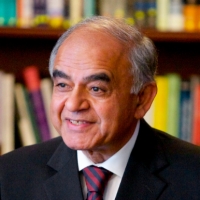India’s Growing Middle Class
Will India be able to build a middle class as backbone for its economy?
November 5, 2001
We may, in fact, have some advantages over our competitors. For every student China sends to university, India sends six. But these advantages will be quickly dissipated unless we act.
A truer measure of India’s failure is not its present level of poverty, but its inability to create a middle class. India’s middle class constituted less than 10% of the population in 1984 and 1985, according to the National Council of Applied Economic Research (NCAER).
Since then, it has more than tripled, but is still less than 20%. If our country’s economy grows 7% over the foreseeable future and if the population increases anually by 1.5%, if the literacy rate keeps rising and if we assume the historical middle-class growth rate of the past 15 years, then half of India will turn middle class between 2020 and 2040.
That is a lot of ifs that we will have meet. And to be sure, there will still be huge disparities between different regions of the country.
Much of west and south India will turn middle class by 2020, but the backward states like Bihar, Uttar Pradesh and Orissa won’t get there before 2040. Disparities are obviously bad, but vigorous migration helps to ameliorate them and creates pressure on the backward states to catch-up.
At these milestones, based on the same growth assumptions I listed above, India’s individual purchasing power will climb from $2,149 in 1999 to $5,653 per person in 2020 — and to $16,500 in 2040.
When half the population in a society is middle class, its politics will change. Its world view will be different, its poor will be fewer — and society will have greater means to look after them.
Thus, to focus on the middle class is to focus on prosperity. This is unlike in the past, when our focus has been on redistributing poverty. This does not mean that we are becoming callous. On the contrary, the whole purpose of the enterprise is to lift the poor — and lift them into the middle class.
There are pessimists, however. Like Malthus, they moan about India’s rising population. Like Ricardo, they worry about the ability of our land to feed the people. The fact is that Malthus and Ricardo have been proven wrong. India’s current situation underlines this as well.
In the spring of 2000, even though India’s population crossed the one billion people mark, the nation’s warehouses were bulging with grain. And the main concern of the agriculture ministry was how to dispose of this mountain of grain without incurring a loss. Admittedly, nutrition levels are still low, but people no longer worry about India’s food problem.
In fact, the last major famine occurred during the last days of the British Raj in 1943. Marx understood far better than Malthus and Ricardo (or our current pessimists) that growth is natural in a market economy — and there is a positive link between technological advance and wealth.
It is also important to remember that there are wide diversities in India’s population growth rate, which is falling very rapidly in some regions — and very slowly in others. Studies show that the difference between the two trends is explained largely by female literacy and female job opportunities. Thus, gender equity and women’s empowerment seem to be at the heart of the matter.
Nature gave India the gift of immense human potential. In today’s global economy, a country’s status is determined by the share of brains that it uses. The most effective way to unleash the power of human capital is through education.
Thanks to our intellectual capital and the opportunities opened by technology and globalization, we face the very real prospect of conquering the pervasive poverty that has characterized the lives of the majority of the people.
In conclusion, the most striking feature of contemporary India is the rise of a confident new middle class. It is full of energy and drive — and it is making things happen. That it goes about in an uninhibited, pragmatic and amoral fashion is true.
It is different from the older bourgeoisie, which was tolerant, secular and ambiguous. The new class is street-smart. It has had to fight to rise from the bottom, and it has learnt to maneuver the system.
As a result, we have good reasons to expect that the lives of the majority of Indians in the 21st century will be freer and more prosperous than their parents’ and grandparents’ lives. Never before in recorded history have so many people been in a position to rise so quickly.
Adapted from “India Unbound” by Gurcharan Das. Copyright © 2001 by Gurcharan Das. Used by permission of the author.
Read previous
A Better World in 2050?
November 4, 2001
